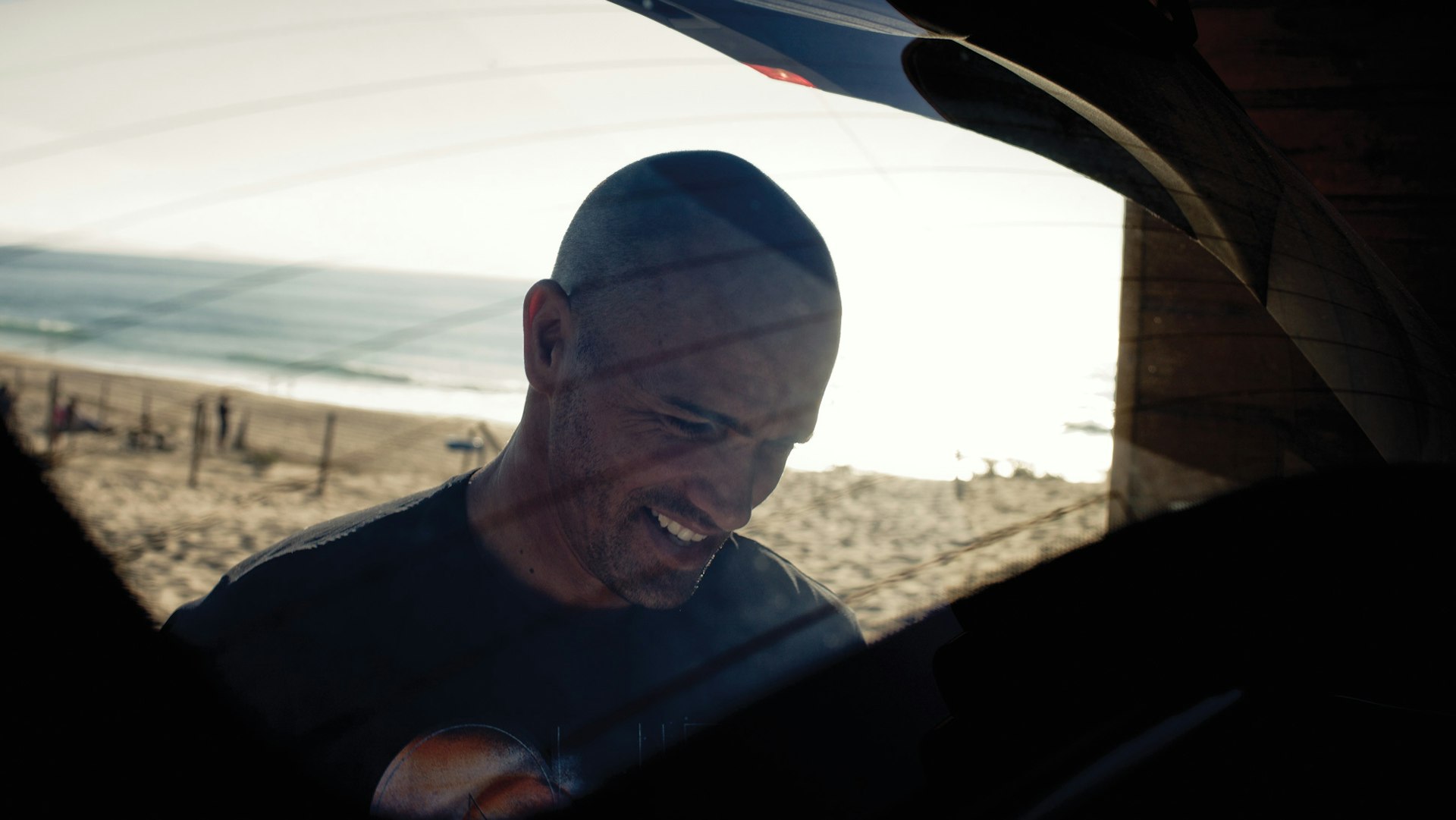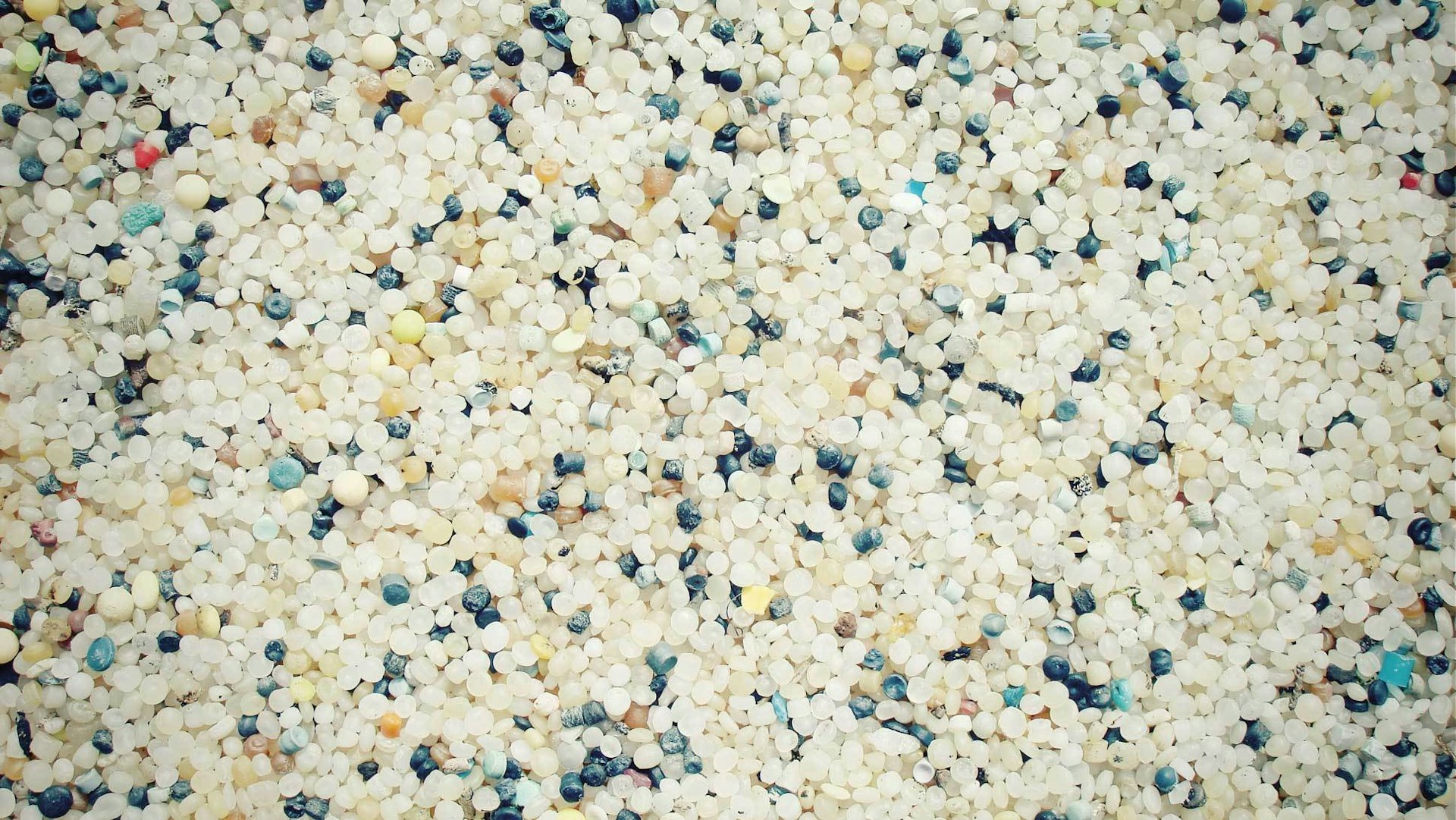
Why plastic marine pollution can no longer be ignored
- Text by Miles Masterson
- Photography by Greenpeace
On the Surfers Against Sewage (SAS) website, there is a video clip of British pro surfer Sam Lamiroy standing on a beach in South West Cornwall. He’s talking about the dire state of marine litter. “This has to stop,” he says with disgust, as the camera pans to a small pile of rubbish underneath a surfboard in the sand. Some of it is unrecognisable and there are a few tin cans, but the vast majority is obviously plastic bottles. “It’s time to call the government to action,” says a determined Lamiroy, as he writes his signature in support of the SAS marine litter campaign.
Most of us would have seen similar scenes at our own beaches. But what we might not realise is that marine litter is turning into one of the greatest post-modern environmental catastrophes. Along with global warming and carbon emissions, our reckless production and disposal of plastic – a crude oil product that’s become ingrained into our lives – is slowly suffocating the planet. “Joining plant, animal, and mineral, we must now acknowledge a new kingdom, a fourth kingdom, the kingdom of plastic,” writes US blogger and plastic trash art activist Pam Longobardi, “with an army whose members never die or decompose, and threaten to outnumber all others.”
The evidence is alarming. Scientists have found that vast quantities of throwaway plastic consumables reach the ocean, and that between 60 to 80 per cent of all marine debris is plastic. Larger plastic debris – mostly bottles but including every other commodity known to man – breaks down in the sea to join billions of tiny pre-production plastic pellets, known as nurdles or ‘mermaids’ tears’. As the raw material for almost all plastic products, these tiny pellets are produced in vast quantities and shipped around the world, but have a tendency to spill into our oceans along the way. In fact, there is so much plastic in the sea right now that the global average is 46,000 pieces per square kilometre. The sheer volume of plastic pollution is set to have a potentially devastating effect on the marine environment, and is ultimately coming back to bite the greedy, lazy bastards who invented the substance in the first place: human beings.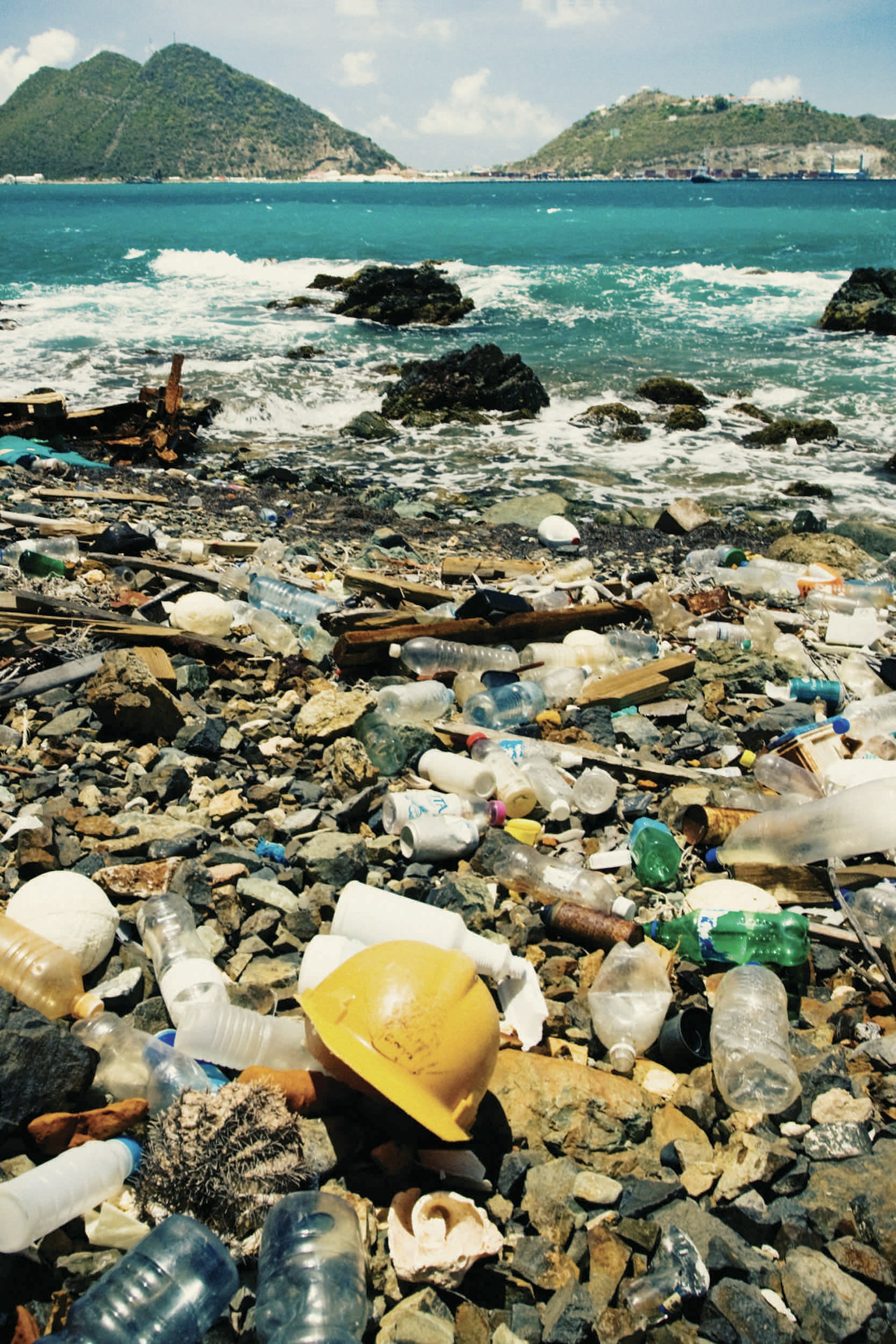
Could you last even a day without consuming a product wrapped in plastic, or by not buying something containing it or made using it? It’s a mind-boggling proposal. And, unless you are a Kalahari Bushman, the answer, in all probability, is no. Those who have tried attest to this. British journalist Christine Jeavans attempted to live plastic-free for a month in 2008 with great difficulty and admits to reverting back to her old ways afterwards. US blogger Beth Terry has been collecting her own plastic waste for more than two years and recording it on her website, fakeplasticfish.com. Unable to eliminate her reliance on plastic completely, Terry has nevertheless shown that it is possible, with some considerable effort, to radically reduce plastic consumption.
The combination of scientific evidence and these experiments show that human dependence on plastic has reached a crux and the repercussions are beginning to filter through our thick skulls.
But it is not something that we’ve only just tuned into.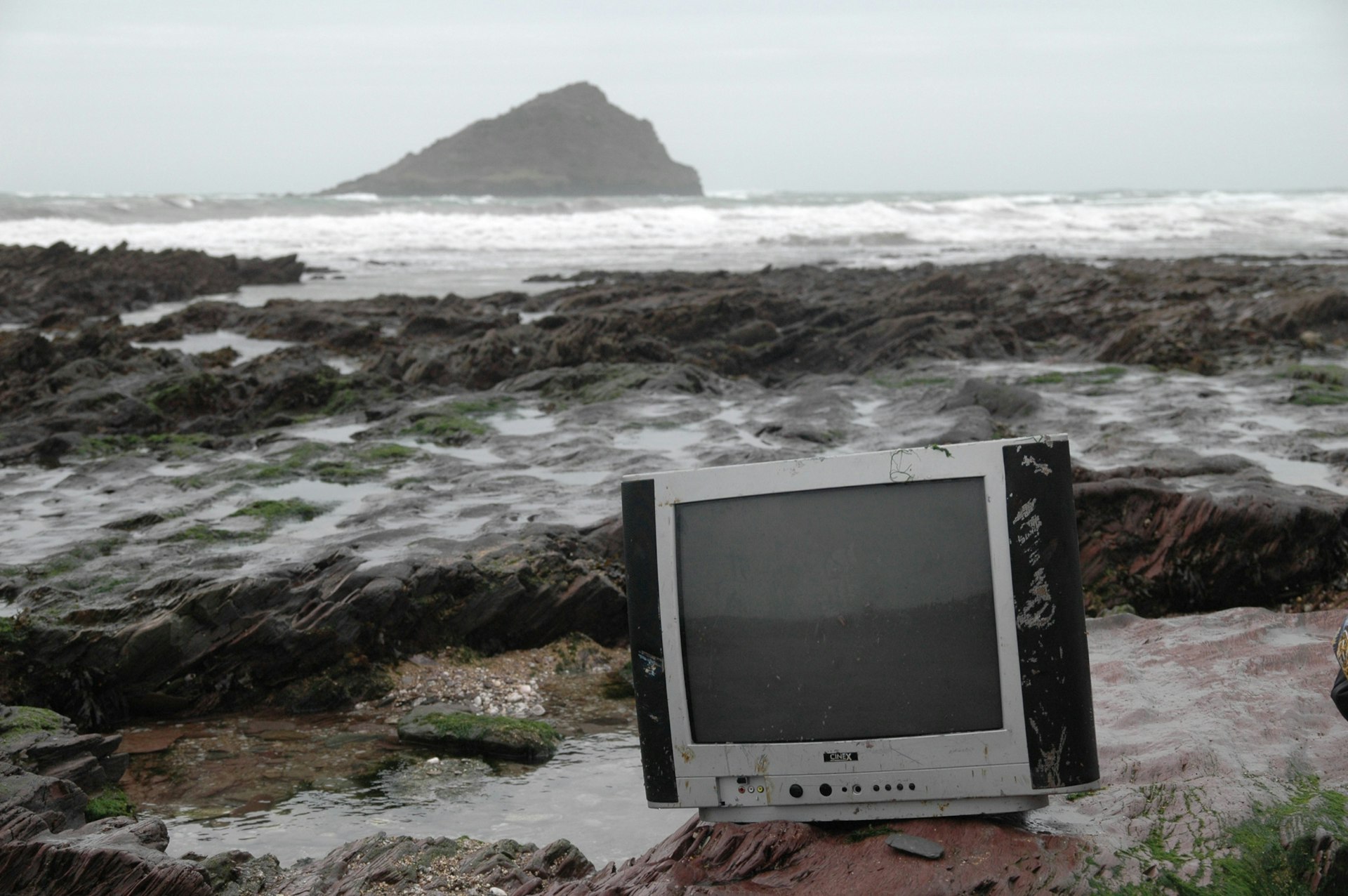
Rubbish Tips in the Ocean
In 1997 Californian academic, surfer and sailor-turned-activist Charles Moore made a discovery in the North Pacific that would change the way we view plastic waste. Returning from a yacht race between the US and Hawaii on his vessel Algalita, Moore eschewed the traditional route around the windless high-pressure Doldrums of the ten-million-square mile zone known as the North Pacific Subtropical Gyre, which is usually given a wide berth by sailors and was consequently left largely unexplored. Curious to see where his alternative route would take him, Moore sailed across the eastern end. Instead of being a benign aquatic void as previously surmised, the gyre, he quickly found, is the world’s largest rubbish tip. Thanks to the weather patterns and ocean currents that govern the area, flotsam and jetsam of every kind – tyres, traffic cones, fishing nets, bottles and more – were all entangled or floating free on or just below the surface in a vast quagmire now termed the Eastern Garbage Patch. “Here I was, in the middle of the ocean, and there was nowhere I could go to avoid the plastic,” described Moore.
Though other scientists and researchers had highlighted the problem, it was Moore’s discovery that truly grabbed the world’s attention. Already involved in marine conservation through his Algalita Foundation, Moore has since become an outspoken authority on the problem of ocean debris, and continues to draw attention to it. Indeed, one of Algalita’s current aims is to discover and document other ‘garbage patches’ in the rest of the world through their associated 5 Gyres project. Aside from the North Pacific, there are four more gyres – in the North and South Atlantic, South Indian and South Pacific Oceans – which remain largely unresearched, though experts have always imagined similar accumulations.
As it emerges, their worst suspicions are slowly being confirmed.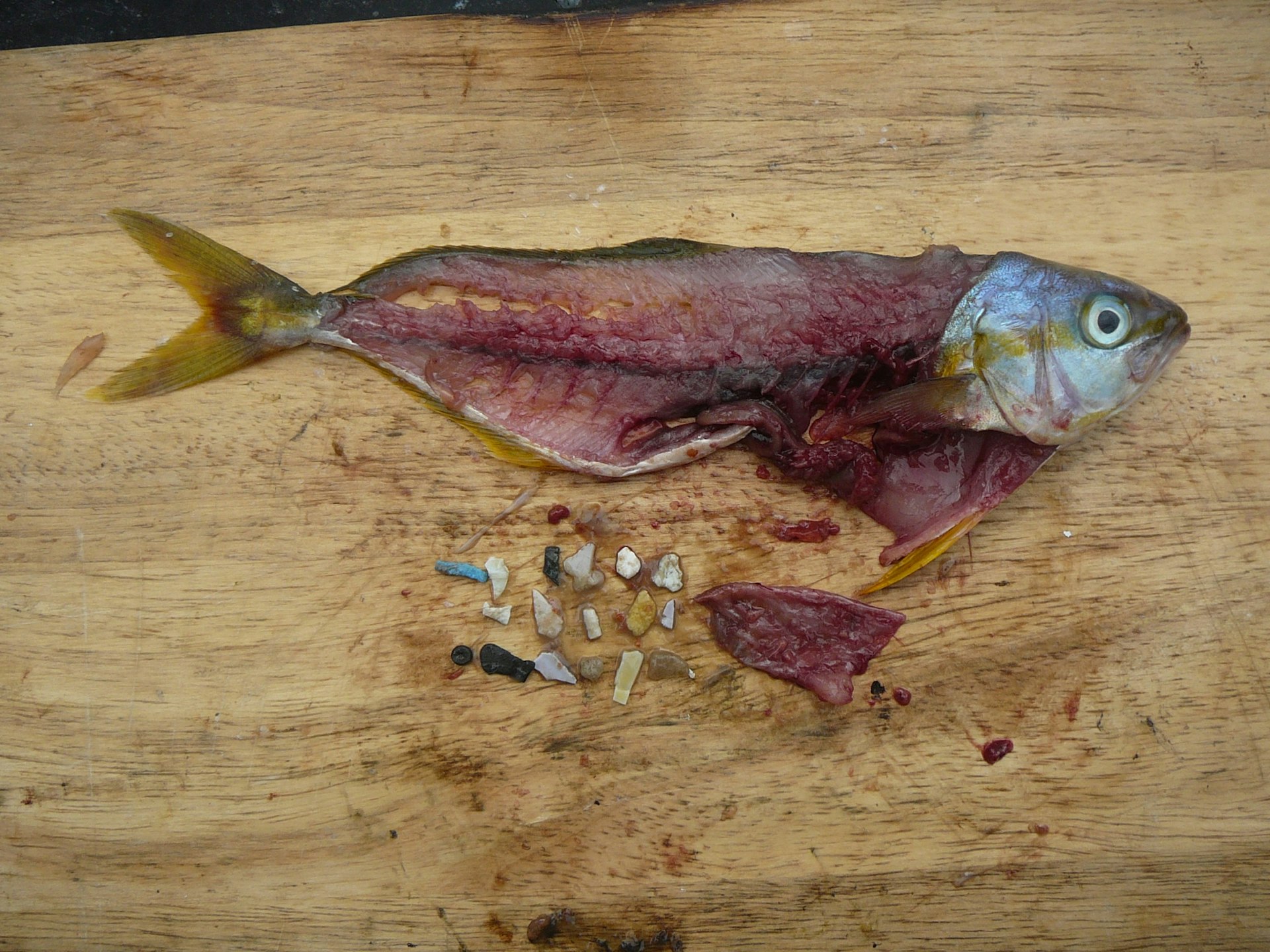
One of Algalita’s chief plastic hunters is 5 Gyres’ Marcus Eriksen, whose path to his present vocation is at once ironic and telling. A former US Marine, Eriksen was stationed in the Middle East during the first Gulf War. Whilst trapped in a foxhole, he had an epiphany. “I [was] in Kuwait covered by oil and soot,” Marcus recalls. “I realised that we were fighting in that desert not just for human rights and the national security of Kuwait, but more about securing access to fossil fuels.” Oil, of course, is the source material for most plastics. Burdened by his enlightenment, Marcus soon abandoned his military career and transferred his altruistic nature to the defence of the environment instead (and has subsequently written a book about it).
For a time Marcus focused on his studies and other conservation projects. Then, armed with a PhD, MA and B.S. in Science Education, his interest in plastic debris was revived during the second Gulf conflict, as well as by an earlier research trip to study birds on Midway Atoll in the Central Pacific. “I ended up seeing hundreds of carcasses of albatrosses, which were all full of plastic debris,” Marcus says with audible bile. “Toys, toothbrushes, cigarette lighters and even medical waste, syringes protruding out of their chests; thousands of unidentifiable plastic fragments and millions of microplastic fibrants more or less littered the entire island.”
Back in the US, Marcus built a catamaran using plastic bottles and sailed it down the Mississippi to draw attention to the issue. He chose plastic bottles, which can take hundreds of years to break down, and their virtually indestructible caps as the most ubiquitous form of marine litter. He soon met Charles Moore and began to work with him. Today, as Director of Research and Education and Project Development Manager, Marcus is guiding the 5 Gyres search with his wife and fellow academic, Anna Cummins. The couple sailed across the North Atlantic in early 2010 on a 3000-mile trip from the Azores to Bermuda, including the Sargasso Sea. “We collected samples all the way,” says Marcus. “Every one was full of plastic.”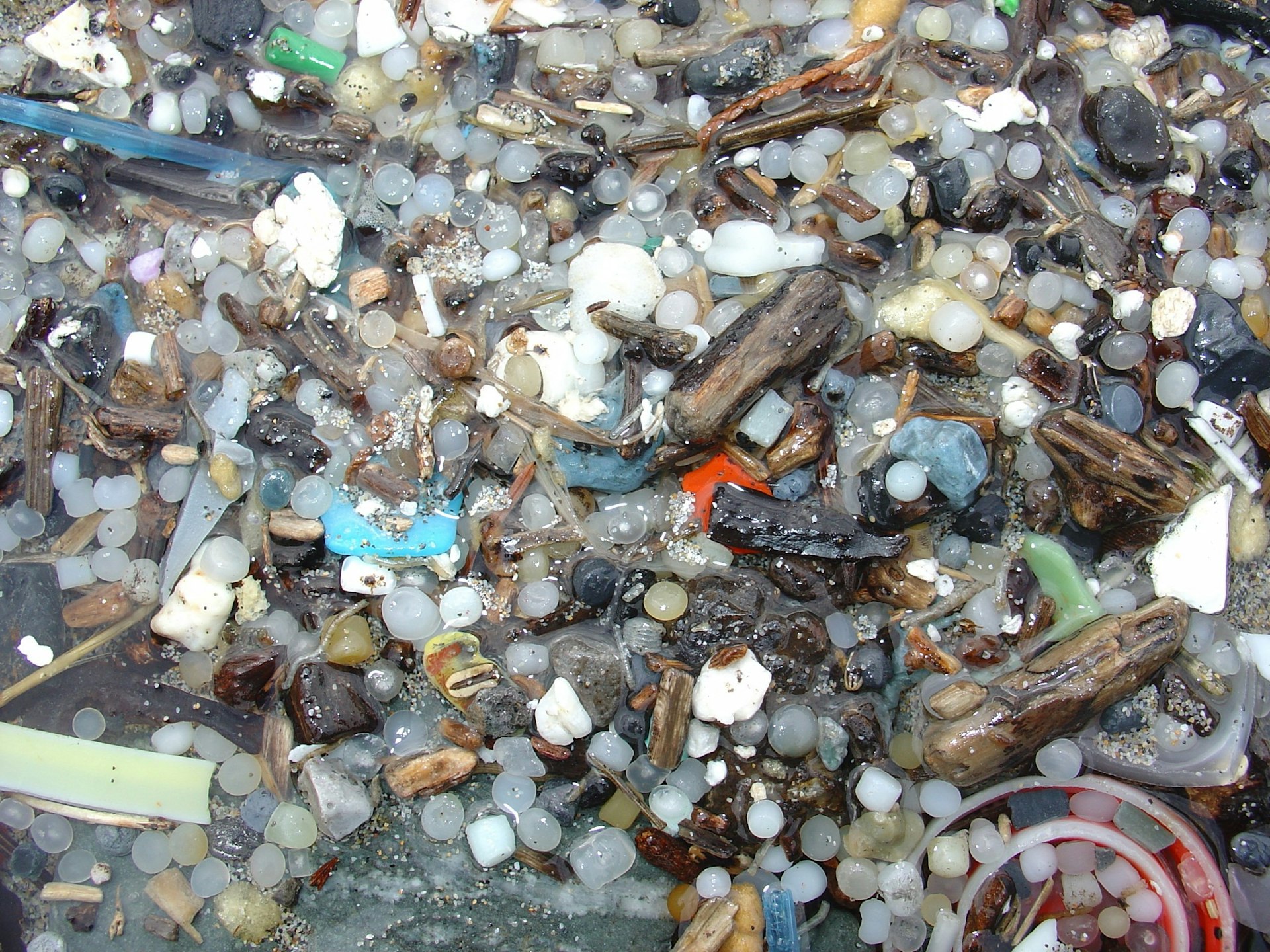
The Threat of Microplastics
But whilst the most palpable evidence of destructive plastic is large debris (including discarded fishing nets, which have decimated sea otter populations in Alaska for example), there is another, potentially more dangerous pollutant: plastic pellets, known as ‘nurdles’ or ‘microplastics’, which are mostly invisible to the human eye. The sheer volume of these pellets in our oceans cannot be underestimated. On shores worldwide – such as Kamilo Beach in Hawaii, which is among the most polluted in the world – the proportion of these fragments of plastic now exceeds that of sand granules themselves.
The presence of these pellets is, for many environmentalists, the most frightening aspect of plastic pollution. Apart from the mechanical repercussions they might have on the digestive systems of marine life and birds that mistake these often colourful fragments for food, nurdles have much deeper ecological ramifications. Scientists are beginning to believe that toxic substances such as long-banned DDT (a synthetic pesticide), PCBs (polychlorinated biphenyls), BPA (bisphenol A) and other POPs (persistent organic pollutants), as well as chemicals used during the actual plastic manufacturing process, leech into the plastic from the sea, and are being absorbed into the food chain.
Dr. Anna Cummins recounts how during a 2008 expedition across the Pacific Gyre with Charles Moore, they discovered microplastics in lantern fish, a small, alien-looking creature with a phosphorescent appendage above its head that spends its days in the dark depths feeding on plankton and swallowing whatever else is in the ocean. “We collected 671,” says Anna, “and of those about 35 percent had ingested small pieces of plastic in their stomachs, some with really high levels. When you took out the juveniles, the amounts went up much higher.” Lantern fish, adds Anna, are prey for a number of larger deep ocean fish such as tuna, mahi mahi and squid, which predictably all show alarming levels of chemicals, though whether these come from their prey or are absorbed directly from the ocean itself is still to be determined.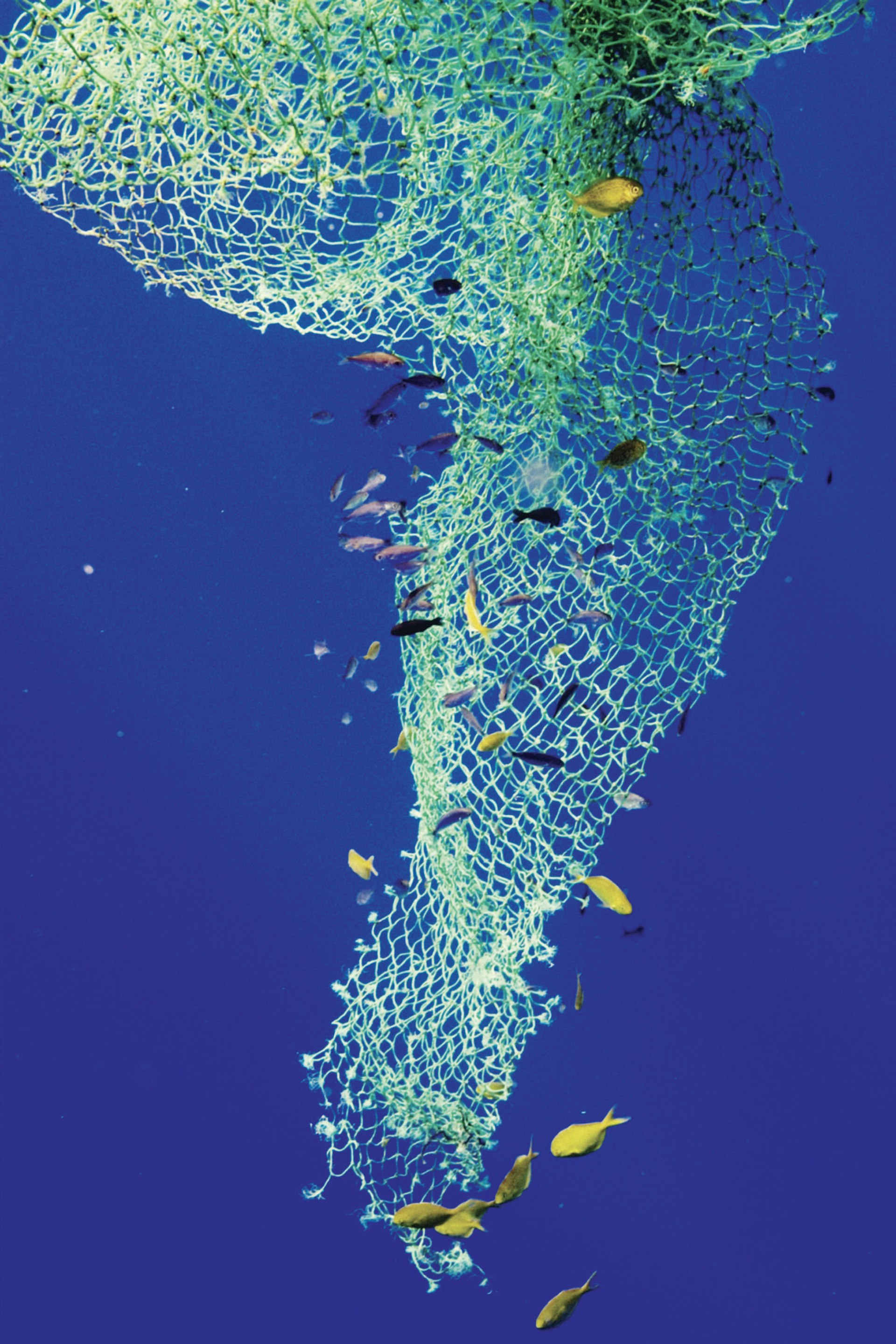
Yet it’s not a stretch to surmise some of this may come from sources such as lantern fish. Though global studies are in their infancy, this branch of scientific research is growing fast. In the murky world of academic evidence – where naysayers and contrary outcomes abound, and a direct link is yet to be found – recent studies strongly indicate that humans are showing alarming levels of noxious chemicals too. Anna is well known in the US for her self-administered ‘Synthetic Me’ project, whereby she tested her own body for its chemical content. Disturbingly she found trace elements of chemicals such as DDT, PCBs as well as flame retardants and even CFCs (chlorofluorocarbons). “We have no way of knowing where these chemicals came from,” admits Anna, who also acknowledges that plastics are of course not the only possible culprit. “The flame retardants are common in California in our furniture, baby clothing and all kinds of things. The PCBs and DDT could have been through eating fish or bioaccumulation, but there is no way to tell as we are exposed to so many chemicals all the time.”
Though they have not yet been able to conduct similar tests on ocean organisms such as lantern fish, the next step, says Anna, is to determine “if there is a correlation between the levels of PCBs and other POPs in their tissues to the amount of plastics being consumed.” Regardless, much research has concluded it is not just the presence of individual chemicals in our systems that is the most alarming, but their combined effects, especially at critical levels of our development. “We don’t yet know how this impacts on our long-term health… or a couple of generations down the line,” agrees Anna. “[But] we really need to adopt a cautionary approach… because this level cannot be good for our bodies and we can’t wait until it is documented that X levels of PCBs, for example, will lead to this consequence.”
To explain how these chemicals enter the food chain, Professor Richard Thompson of the University of Plymouth in the UK cites the world-renowned research of Japanese Professor Hideshige Takada. Through his International Pellet Watch – a global monitoring group that gathers beached plastic pellets, many of which are sent in by environmental organisations and individuals – Takada’s ongoing results are released online. These show that mermaid’s tears contain everything from DDT to BPA and POPs, absorbed by chemical transfer, which are exacerbated as the fragments are broken down into smaller pieces. This is because, reveals Thompson, “the volume of the material remains the same, but the overall surface area increases exponentially.” Although this theory is opposed by some in the plastics industry, who maintain that the chemicals inherent in the manufacture of plastics are washed clean in the ocean, growing evidence suggests that these are replaced by a plethora of others, which then find their way into marine organisms. Professor Thompson has conducted laboratory experiments on mussels and worms involving microplastics as small as 1/500th of a millimetre, which have shown that this transfer does take place in the guts of these organisms. “There is cause for concern,” adds Thompson cautiously, “[although] perhaps not cause for alarm as all the pieces of the jigsaw puzzle are not there yet.”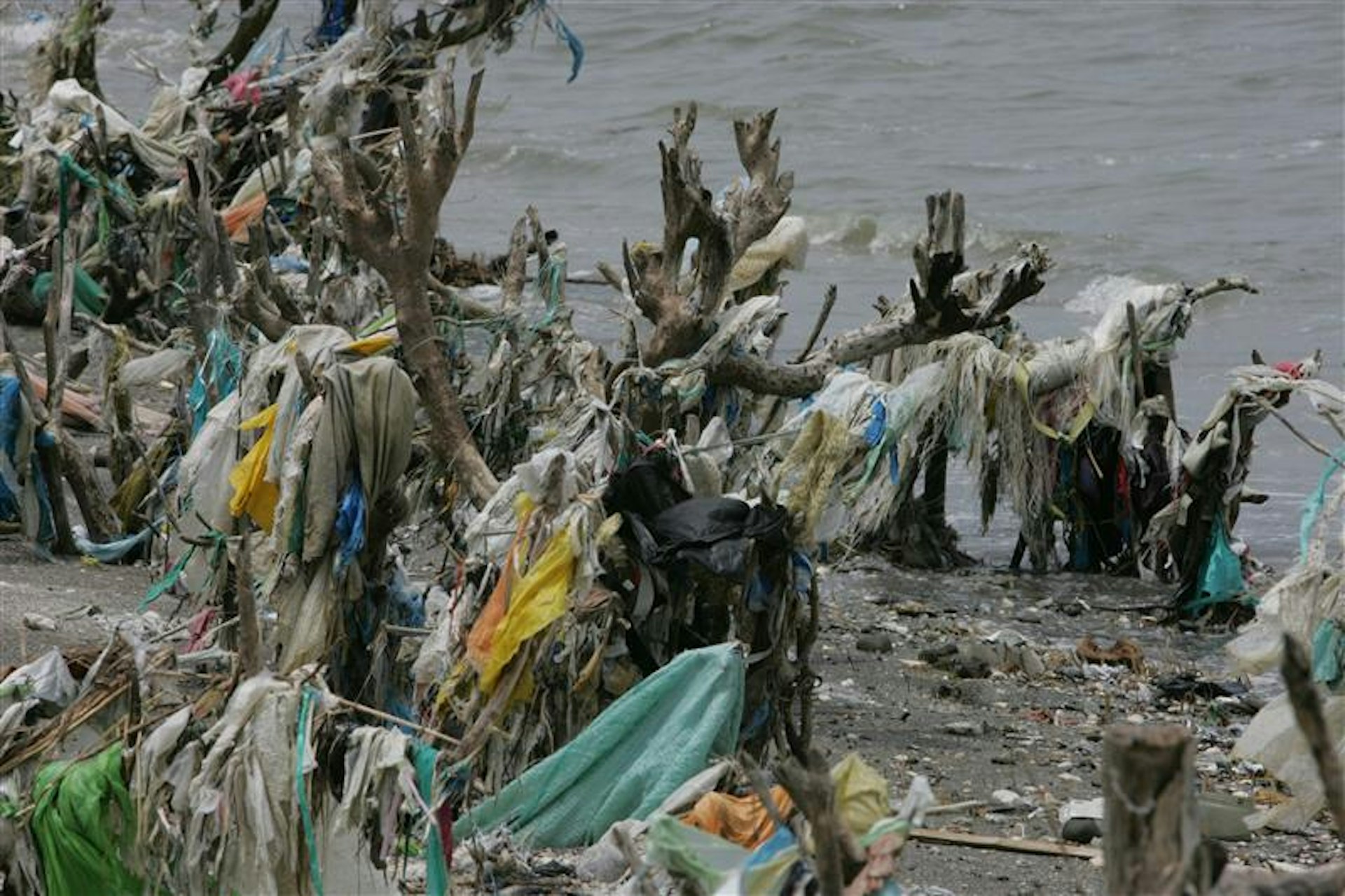
Nevertheless, to make matters worse, some of these fragments are then “cleaned” inside these organisms and excreted back into the environment to mop up more pollutants.
The fact that these microplastics, as well as discarded plastic sheeting, bottles etc., may be forming a suffocating layer on the ocean floor is another aspect of plastic pollution that is only just being looked into. Indeed in billions of years’ time, when future archaeologists are excavating our civilisation – so the dark joke in scientific circles goes – all they will find is a layer of plastic and they might call our era ‘The Plastic Age’.
Yet, whatever gets ultimately proven in the near future, it is clear we are only just beginning to understand the volume and potential of plastic to harm the natural environment and ourselves.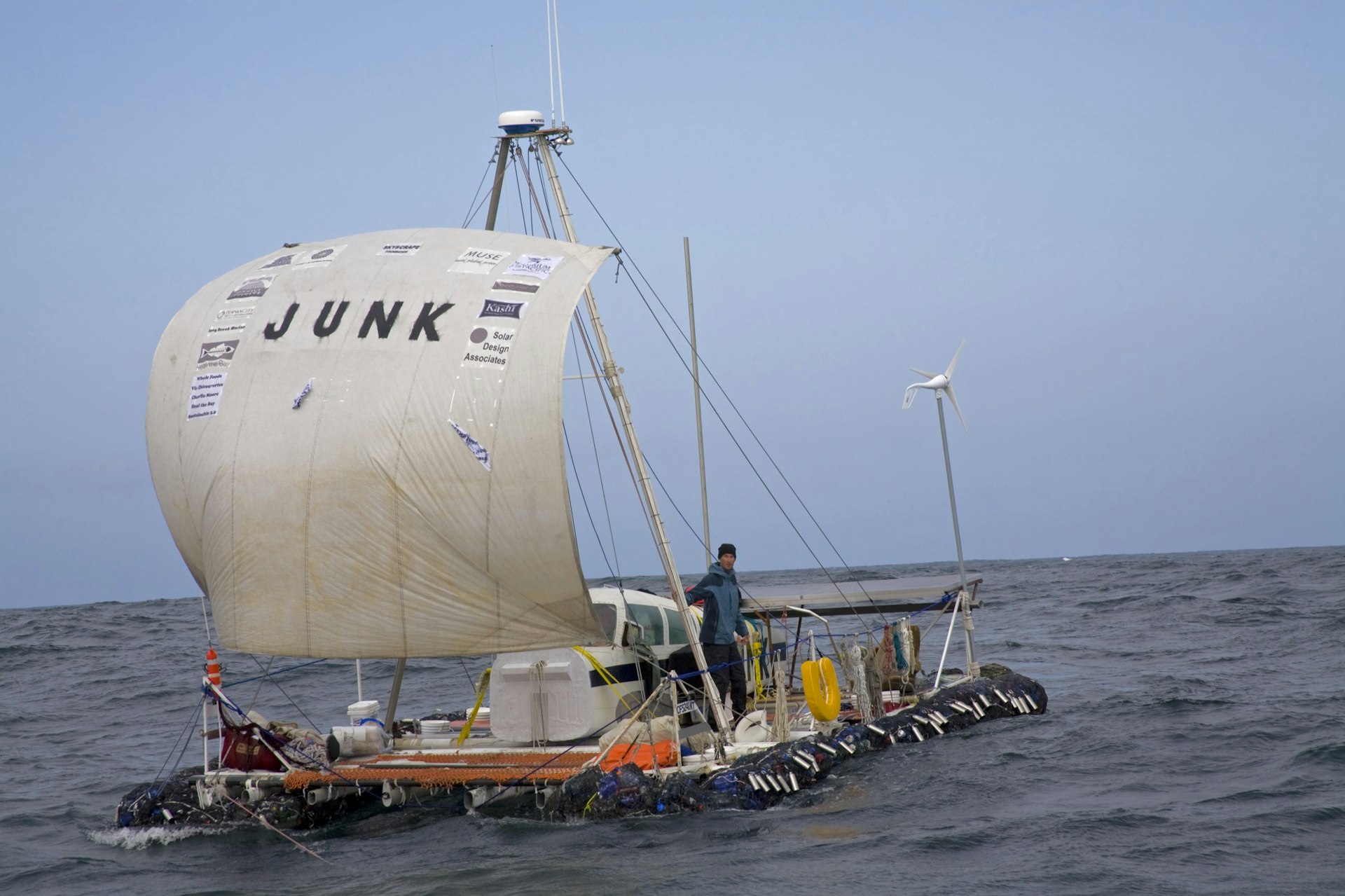
Flip Flops and Bottles
At the time of writing, Marcus and Anna have just completed a scout of the Indian Ocean, where they found similar evidence of accumulation, so it is clear the problem is as widespread across the planet as suspected. Their work and that of Algalita is of course not the only research of its kind. Among other scientific institutions and expeditions, British millionaire activist David de Rothschild embarked in March this year on a global research and discovery venture on a fully eco-friendly boat floated by plastic bottles called Plastiki. Vancouver-based South African ex-pat surfers Bryson and Ryan Robertson and Canadian Hugh Patterson are also about to conclude a similar 56,000 km global voyage that they started in 2000. Whilst completing their studies, the trio decided to sail around the world on a surf adventure. However, as long-time members of the Surfrider Foundation, they were motivated by the piles of debris that wash up on the exposed beaches near their home, and the general ignorance they felt regarding the subject. So they collaborated with Surfrider and other Canadian environmental organisations to create OceanGybe.
As research on the gyres was being paid due attention, OceanGybe sought to find out how much plastic and other marine debris was ending up on some of the world’s more remote beaches. Turns out, a lot. On the leeward shores of atolls in the South Pacific and Indian Oceans, they found more plastic than they had ever anticipated, including plastic bottles, cigarette lighters, flip flops, volleyballs, fishing nets, lines and floats, full laundry baskets, bleach bottles near major cruise ship routes, as well as piles of unidentifiable items. In Cocos Keeling in the northwest Indian Ocean, they found a beach, he says, “ankle to knee deep in hundreds of flip flops and [plastic] bottles.” Attempting to clean it up, Ryan adds, they soon realised was futile. “[After] you’ve been cleaning for an hour or so and turned around afterwards… you can’t even see the piece of beach that you cleaned up,” he says.
Unfortunately, as Ryan’s experience shows, ridding the world’s oceans of the shocking amount of plastic already out there is not the ideal fix. Whilst these large plastic accumulations are the most tangible evidence of the problem, and cleaning them up might appeal to some as an immediate solution, most scientists and researchers agree that the energy would be better spent making sure the plastic doesn’t end up there in the first place. “The net energy costs would be almost worse in terms of greenhouse gas emissions and burnt fossil fuels to go and do it,” adds Robertson, “and then there’s the problem of where it is.”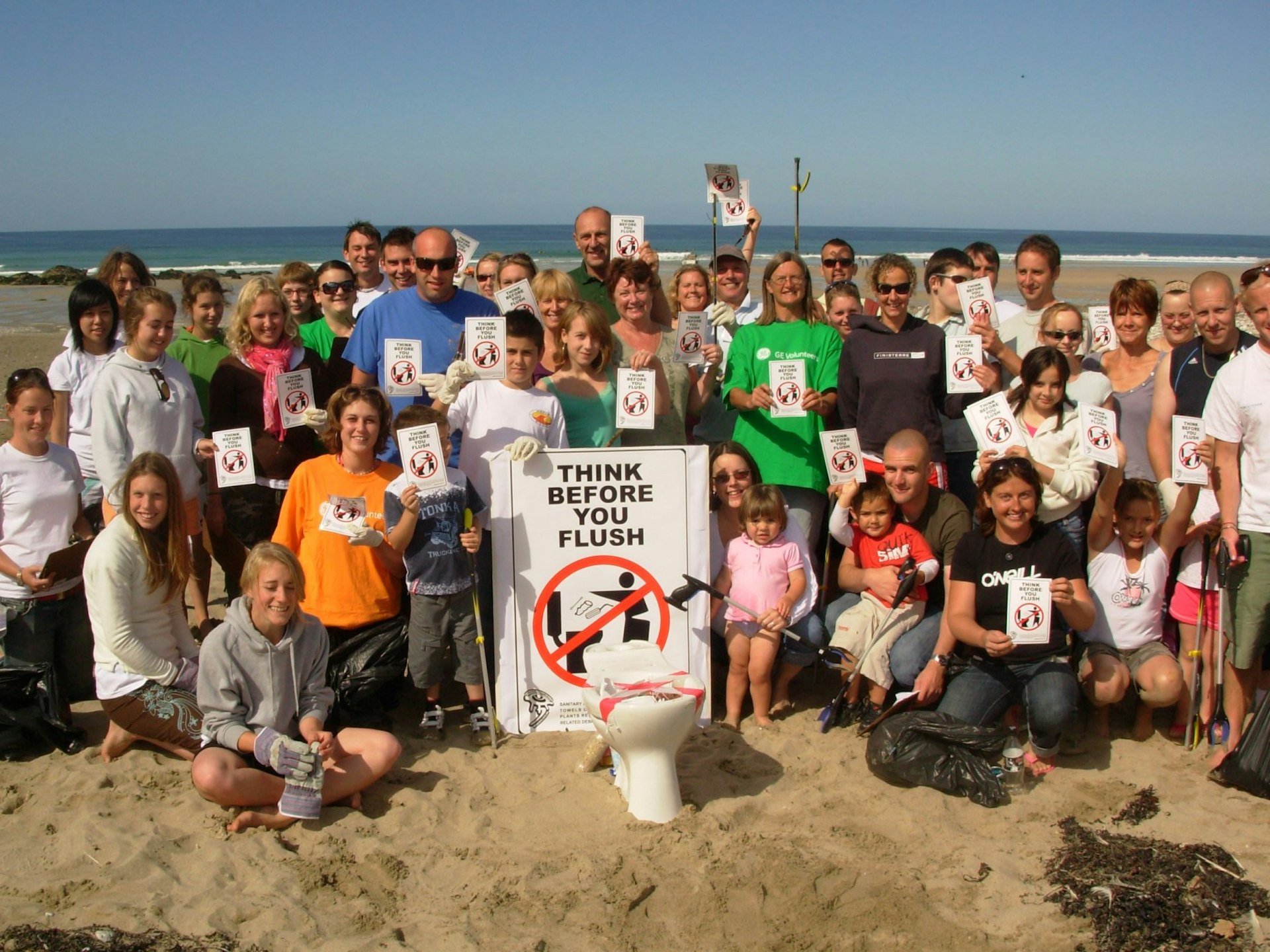
Recycling and Bioplastics
So who is really to blame and how do we stop it? Until quite recently the plastics industry have placed the burden of blame on consumers for littering. At the same time, they have focused a lot of resources and hype promoting recycling as the ultimate panacea, largely absolving themselves. “I find it frustrating that when I go to meetings that have representatives from different levels of industry, all tend to pass the buck and not accept there is combined responsibility,” says Richard Thompson. Anna Cummins has had a similar experience in the US, where she says some plastics companies loudly promote and draw attention to recycling as a kind of smokescreen to the real issues of manufacture and consumption. “As a corporation they have money at stake and nobody wants to touch the bottom line,” she says. “They don’t want to tell consumers to stop demanding so much plastic.”
In the global economy, where plastic is used to transport and package almost everything we consume, this is a huge issue for industry, government and society alike. And recycling, it seems, is not making as big a dent as one may hope. According to Project Aware, a US foundation run by divers to draw attention to the plight of the oceans, only an estimated one billion of the fifteen billion pounds of plastic manufactured is recycled annually in the States.
Even recycling itself is not as efficient as one may think. Part of the problem stems from the myriad of different kinds of plastics. A water bottle, for example, might contain one kind of polymer, the lid another, the plastic belt around it yet another and the wrapping it came in yet another. While major advances have been made in processing different plastic polymers together, it remains a challenge for the recycling industry to streamline it all in one effective process. “A lack of stock, if you will, is another thing,” says one British plastic industry expert, who preferred to speak off the record, “i.e. to effectively gather something as simple as a yoghurt pot from all around the UK into one place is not profitable, and would end up affecting the environment through transportation.” Beyond that, he adds, many disposable plastic wrappers and receptacles are thrown away with food still clinging to them, making them unsuitable for many plastic recycling operations.
One solution to this is the production of so-called bio-degradable plastics, which can be combined with foodstuffs in recycling. Already there are polymers that ‘photo-degrade’ in sunlight, but these plastics take that one step further and are ‘compostable’. But at this stage there are still only a handful of compost facilities in the UK and a couple of dozen at most in the US. Critics of the plastics industry will also quickly point out some unscrupulous companies, who they say try to dupe consumers into thinking these products are wholly ‘eco-friendly’ when the truth is, unless they end up in the above mentioned facilities, they are abjectly not.
That’s not to say the entire industry is totally ignorant. As consumer awareness becomes more widespread, the industry has in turn begun research into more effective recycling methods, true biodegradable products, as well as ‘bio-sourcing’ plastic products from greener materials to decrease reliance on petrochemicals and enhance their recyclability. Academic institutions are also working hard on finding a solution to the problem, such as the Imperial College London, who in partnership with a company called BioCeramic Therapeutics, recently created a ‘bio-renewable’ polymer from sugar. Agroplast, based in Denmark, are also looking at creating plastic made of, from all things, animal urine.
Legislation, Activism and Us
Though this kind of research is still in its infancy and has yet to be proven economically effective, it is still heartening news for the plane (even if it is in part driven by the economic survival of the plastics industry). Part of this is also in reaction to growing legislation all over the world aimed at decreasing marine debris and seaside litter. The issue has been prominent in the US ever since Moore’s shocking find and many laws have been passed to this effect (although some would say not enough, of course). More recently in Europe, where thanks to the North Atlantic Drift the problem is particularly severe on west facing seaboards, a Pan-European initiative called Task Group 10 (incorporating, among others, North-East Atlantic environmental organisation OSPAR) was recently set up to monitor plastic and other ocean debris levels and advise regional governments. Legislation has also been passed in Brussels to certify plastic products made from renewable resources.
Environmental organisations such as Surfrider in France and the UK’s Surfers Against Sewage have also been highly effective in bringing attention to the issue. This year SAS won an eco award for a short video clip created in 2009 called Mermaids’ Tears. They surreptitiously filmed the goings-on at certain plastic factories and found an abundance of stray nurdles. “When rainwater pours they go down drains and into the sea,” describes Andy Cummins, Campaigns Officer. “One factory had a 20×10-foot area outside five to ten nurdles deep, you had to brush them aside a few times with your foot to see the ground, so that would be in the millions of individual pieces.”
Working together with the British Plastics Federation, the SAS have managed to effect legislation on nurdles. And while it currently relies largely on self-compliance, it is a huge step in the right direction. The SAS have also embarked on campaigns to clean up beaches and reduce discarded cigarette butts – which are made up of thousands of plastic fibres – such as their Return to Sender initiative, whereby members are encouraged to send marine litter back to the companies that made them. Then there is their UFO (Unidentifiable Floating Object) campaign, which focuses on finding the source of a type of plastic bung washing up on beaches all over the UK. “We don’t know where they are coming from and we can’t identify them,” explains Andy. “We are hoping for members to help [and] then try to change industry practice, get them to change it or open them up to industrial action.”
In the end, of course, it comes back to us. Very few activists and environmentalists are specifically ‘anti-plastic’ and all agree that the substance has a place in our world as it can help to decrease carbon emissions and waste from other fossil fuel sources. But it has to be used in a sustainable way. As for the ‘poster child’ of plastic pollution – the ubiquitous water bottles covering our beaches and seas – high profile activists (such as the Jack Johnson-endorsed Get Off The Bottle campaign) are working to reduce our reliance on this unnecessary product.
As consumers and amateur activists we all need to take steps big and small, through our wallets and ballots, to ensure that the rampant pollution of plastic debris is halted. Even the surf, skate and snowboard industry, which uses plastic in most of its products, needs to be pressurised into making the necessary changes. Boardshorts made from recycled plastic may be a start, but there is still room for big change. We can’t all simply rely on the full-time researchers and activists. We all need to take responsibility, get informed, spread the word and force industries and governments to tip the balance back in Mother Ocean’s favour, before it is too late and we suffocate on our own plastic debris.
This article originally appeared in Huck 21 – The Deftones Issue, from June 2010. Subscribe to Huck today to make sure you never miss another issue.
Enjoyed this article? Like Huck on Facebook or follow us on Twitter.
